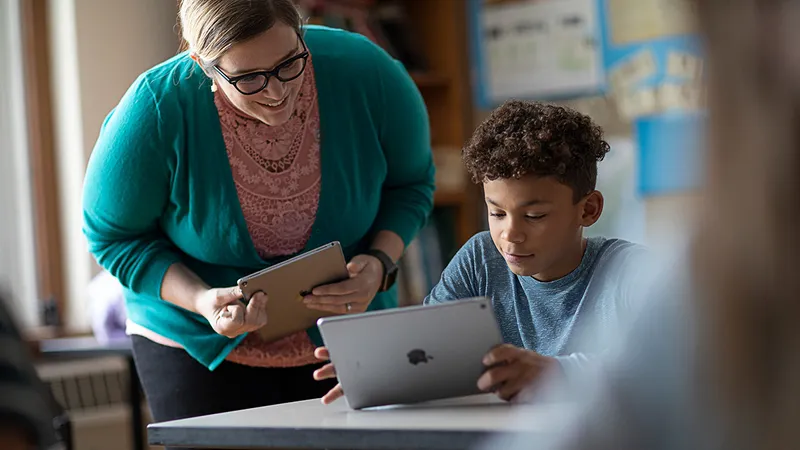A balancing act
Teachers want students to access research and other educational content online. They also need to keep learners safe from dangerous or inappropriate content— as well as from phishers and predators.
What online content puts students at risk?
Beyond the distraction of students being on social media during school rather than focusing on their education and pornographic content, some sites can be dangerous. They can put students at risk for sexual or financial exploitation, or for engaging in unhealthy and dangerous activities. These sites contain:
- Hate speech, violent or radicalizing content
- Encouragement for self-harm, suicide or anorexia
- Phishing or predation
- Cyberbullying
- Gambling
Proactive protection
Every school needs a two-pronged approach that includes:
- System security: A filter that blocks malware, adware and spyware keeps students safe while securing your school's network.
- Monitoring and reporting: collecting anonymized data to better understand what and where students may be seeking unsafe content.
Why not just block everything?
Especially as students now often bring school devices home with them, it might be tempting to just lock everything down except access to classroom software or ebooks, removing the dangers of the internet from the picture entirely.
However, studies show that a growing number of parents, students and teachers are deeply concerned about student privacy, and for good reason: complete and granular monitoring and reporting on student online activities can actually harm students.
- Low-income students are disproportionately affected by excessive monitoring, leading them to distrust technology and fall further behind
- LGBTQIA students may restrict their internet use out of fear of being outed or of exposing their families to legal action; this increases their risk of suicide
- Students of color can experience increased long-term disparities and impeded academic progress when individually monitored
Creating responsible digital citizens
A part of any student’s education should prepare students for safety on the internet as they move out into the world. This includes how to use critical thinking to determine what a reliable source is and how to avoid phishing and other scams.
Our e-book introduces readers to teaching resources from Common Sense Education’s Digital Citizenship program, which offers ready-to-teach lessons, curriculum and other ideas.
Finding software that strikes the balance
The right filtering and security software to tackle this challenge should include:
- Filtering on all school or BYOD devices in school and off-site, including partial site blocking
- Defense from unknown attackers with behavioral analytics and real-time alerts
- Reports for schools and parents
Learn more details, and about how Jamf can help, from our e-book "Content Filtering Essentials for K-12."
Learn how to protect, respect and educate students online
by Category:
Have market trends, Apple updates and Jamf news delivered directly to your inbox.
To learn more about how we collect, use, disclose, transfer, and store your information, please visit our Privacy Policy.





